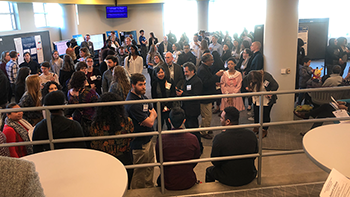Systemic Analysis of the Use of Artificial Intelligence (AI) in Regulating Terrorist Content on Social Media Ecosystem Using Functional Dependency Network Analysis (FDNA)
Description/Abstract/Artist Statement
This research is a systemic analysis of emerging risks to the use Artificial Intelligence (AI) in regulating terrorist content on social media ecosystem using Functional Dependency Network Analysis (FDNA), a proven system-design-and-analysis tool.). The research has three phases: 1) framing the problem by identifying and describing AI ecosystem elements as intended, implied and explicit objectives, discernable attributes, and performance indictors; 2) describing the idealized problem-solved scenario, which includes detailing ‘success’ states of the ecosystem; and 3) systemic risk analysis including identifying failure scenarios for each element and establishing causalities among elemental attributes leading to failure scenarios. This research contributes toward a sustainable and more robust solution to the issue of regulating one particular form of malicious content on social media platforms (i.e., terrorist content) based not on one perspective but on the entire ‘ecosystem’ using FDNA.
Faculty Advisor/Mentor
Cesar Ariel Pinto
Presentation Type
Poster
Disciplines
Communication Technology and New Media | Other Operations Research, Systems Engineering and Industrial Engineering | Risk Analysis
Session Title
Poster Session
Location
Learning Commons, Atrium
Start Date
2-8-2020 8:00 AM
End Date
2-8-2020 12:30 PM
Systemic Analysis of the Use of Artificial Intelligence (AI) in Regulating Terrorist Content on Social Media Ecosystem Using Functional Dependency Network Analysis (FDNA)
Learning Commons, Atrium
This research is a systemic analysis of emerging risks to the use Artificial Intelligence (AI) in regulating terrorist content on social media ecosystem using Functional Dependency Network Analysis (FDNA), a proven system-design-and-analysis tool.). The research has three phases: 1) framing the problem by identifying and describing AI ecosystem elements as intended, implied and explicit objectives, discernable attributes, and performance indictors; 2) describing the idealized problem-solved scenario, which includes detailing ‘success’ states of the ecosystem; and 3) systemic risk analysis including identifying failure scenarios for each element and establishing causalities among elemental attributes leading to failure scenarios. This research contributes toward a sustainable and more robust solution to the issue of regulating one particular form of malicious content on social media platforms (i.e., terrorist content) based not on one perspective but on the entire ‘ecosystem’ using FDNA.


